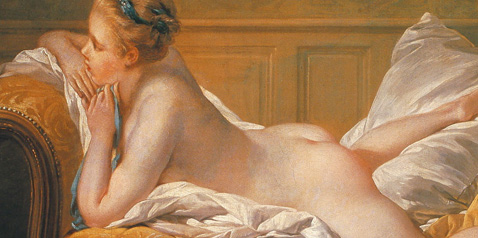
FRANÇOIS BOUCHER
More perhaps than any other painter, the name of François Boucher (Paris 1703–1770 Paris) is linked with the style of French Rococo. To be sure, he was one of the most prolific artists of his generation, worked in almost every medium, and devoted himself to every genre. His art was widely reproduced in the form of prints, and this made him well-known throughout Europe.
Boucher became a member of the Academy in Paris in 1734. As a favourite of Madame de Pompadour, he was supported by the court and by 1765 had become ‘first painter to the king’. Boucher had a particular talent for marketing his art; among other things, he designed porcelain and tapestries. His predilection for delicacy and colourist charm made his art particularly suitable for the interiors of the Rococo. Only late in his career, when this style was going out of fashion, were these decorative qualities in his painting to become the butt of criticism. Denis Diderot, whose attitude towards Boucher’s work was positively ambivalent, wrote in a review of the 1761 Paris Salon: ‘This man is capable of anything – but the truth.’


